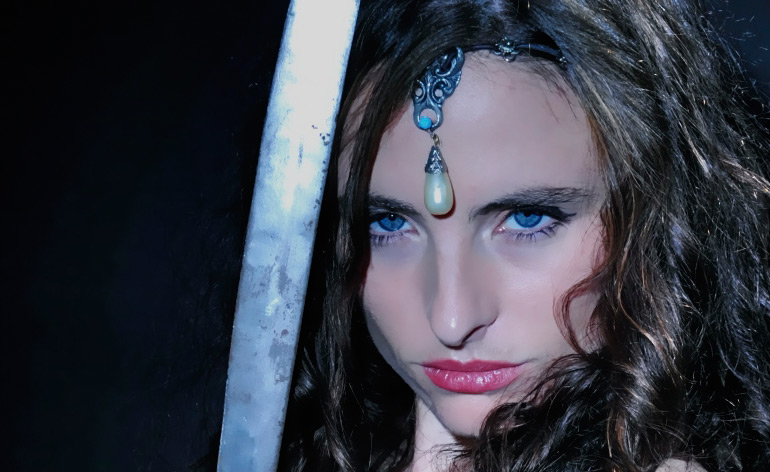
With “Warrioress”, a British, indie martial arts adventure movie released today on DVD, we thought we’d check in with the lead star Cecily Fay who plays the role of the heroine Boudiccu.
With an extensive background in dance, she’s also a martial arts champion -an exponent of Silat (the style mainly used in “The Raid” movies) as well as being an experienced, and highly capable stuntwoman! Along with acting and composing, she also sings and is the founder of her own performance troupe: Babes with Blades.
As well as Warrioress, other notable films she’s worked on include Prometheus (2012), Snow White and the Huntsman (2012), Dragon Crusaders (2011), and Hitchhikers Guide to the Galaxy (2005).
In “Warrioress”, Cecily shows us an energy, capacity and manoeuvres which beguile her small, but perfectly formed physique. She’s seen going all out in several hard-hitting, impressive action sequences with no wires or stunt doubles here folks, this is the real deal!
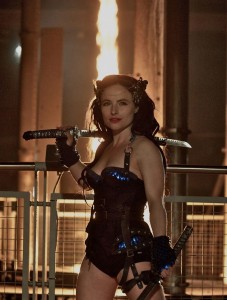
Azura -Cecily Fay
In one of the most comprehensive interviews KFK has ever conducted with a female martial artist, we had the privilege to discuss her background, experiences and training, and reveal what really makes her tick. Now please welcome the irrepressible Cecily!
Hi Cecily, great to connect, let’s lead in with the basics. What is your date of birth? Where do you come from originally?
Hi Raj, yes let’s do that. I was born on the 6th of April 1978 in Lincoln, UK, but grew up in Guernsey, (on the cliffs in a little cottage!).
What is your height and weight?
I’m 4 ft 9in (1.45m) and weigh 6.st 8lb (42kg).
How did you first get into the martial arts? How old were you?
I’ve always loved it since I was a child, I grew up watching “Monkey” and Kung Fu on TV but since there wasn’t really any martial arts taught in Guernsey, I didn’t think it was something you could do, but I was always heavily involved in dance. I had started doing ballet at two and a half years old, gymnastics by six and attended professional dance school by eleven. This was basically theatre school for half a day consisting of ballet, dance, music and drama, whilst the rest was made up of normal school work. So I was trained in ballet and gymnastics for many years, and also performed with the English National Ballet. I always knew right from the beginning without a doubt, that I was going to be a performer.
It was at sixteen when I went to train at the London Contemporary Dance School that I properly got into martial arts as they offered tai chi as one of the options within the curriculum. The minute I started learning it, I knew I actually loved martial arts more than dance. I think it was because of the connection between the philosophy and the purpose behind it, instead of it just being an expressive art form like dance, it had those extra elements behind it. I sought out a martial art that was more combative and I felt I always wanted to use a sword. Eventually I met my first Malay Silat teacher and he said that if I trained everyday he would teach me the very rare Silat Melayu sword form. For the record, my parents were both gymnasts who had actually met at their gymnastics club.
So what styles did you train in?
It is just the two, tai chi and silat, which really has everything in it.

As Boudiccu in Warrioress
Who would you credit as having most influenced you in the martial arts? Who was/is your mentor?
My two teachers: Pak Arafin Mahaddin Seni Silat Haqq Melayu, and Pendekar, Steven Benitez wallisongo, was my British one trained in the Indonesian style.
Can you tell us more about silat?
Well, it’s all about as being as effective as possible. You have both Silat Melayu and Wallisongo which are Malaysian and Indonesian styles respectively. They have almost polar opposite approaches but with the same ultimate end, with the Malay style featuring more initially repetition and drilling whereas Indonesian Wallisongo starts more fluid. Both however, are combat and self-defence styles, not performance styles. I teach a combination of both styles, usually starting with Malaysian Pencak silat which contains drills, conditioning, repetitions and the sword-style battlefield art, which lays the basis for understanding body mechanics which silat is designed to work in harmony with. Then, adding the Indonesian style of Walisongo, which involves more fluidity and the play aspect. Both systems work and it’s good to experience both sides.
Can you tell us how the ancient martial art of silat differs from other martial arts like karate, judo, taekwondo or Muay Thai [kickboxing] for example?
Well, silat hasn’t been broken into parts. You don’t need to cross-train as silat combines all elements and it’s a fully intact system because it hasn’t been commercialised. As it’s a traditional form, it is complex and thus takes longer to get good at it, but when you are good at it, it’s incredibly effective.
Most martial arts focus on one aspect, many don’t have groundwork for example, then it’s kind of limiting whereas silat is very fluid, and features multiple striking. It’s not rigid, you move without hesitating, train at any angle, at off angles, if you fall down you use that motion to continue the flow in a way that’s advantageous to you. The play aspect comes into it, sparring, and experimenting with it, learning to follow flow and sensitivity, as expected it has both the hard and soft aspects; it’s a combination of the two. Instead of being a linear system, it has a lot of spiralling and twisting movements (gelek). The twisting powers your movements, spiralling energy through your body upright and down to the floor as well as moving on the floor. There is a massive focus in moving on the ground (like with MMA, submission holds, locks etc) moving up and down fast, eloquently and being comfortable on the floor whilst training whatever the angle, up or down. There is lot of focus on the ground. In the West we don’t spend much time on the floor people lose that flexibility and suppleness when being so used to chairs!

Boudiccu and White Arrow -Warrioress
Can you shed some light on some of the main actual movements involved?
Yes, for example there is “harimau” which is an aggressive tiger style. A lot of my favourite moves involve harimau, like locks and takedowns. A favourite is a move called ‘harimau poses’ that enables you to twist out from a throat grab. Harimau, can also be used with disorientating effect, springing forward and sideways in unexpected ways. Then there is the “garuda”, (which in Asian cultures symbolises a mystical bird/eagle) that has a slightly different attitude, longer lines, more fluid styles, trick entries, using the length of your arms to enable you to get close to an opponent. There are also particular unexpected moves with the sword; ways of sweeping, low diagonal sweeps, getting them off centre and lock them at the same time while simultaneously spinning round while your sword ends up behind their neck. I think I did that in Warrioress you’ll see a lot of the silat moves in it. There is another move you can see in the first fight in Warrioress where you have someone in an armlock where you kick over their head and under their chin, stretch them out so they’re locked into that position, then you jump with your other leg and kick them in the head. I love that move! It looks really pretty, but don’t be mistaken, it’s lethal!
Are there any particularly lethal moves? Could you translate a couple of these into English and give their meanings?
Oh, there are lots of moves like that in silat!
Harimau itself has a lot of vicious aspects used in real life combat like ripping ears off. There are locks and breaks used for example with fingers in the oesophagus, there are power blows but also multiple striking called Pukulan that are short set-ups for chokes and lots of devastating moves.
There are also other Indonesian animal styles within this system including buaya – crocodile used in ground attacks, crushing cobra – chokes, and concepts and vehicles for ways of moving fluidly like kucing – cat.
It’s rather like learning the alphabet, once you know it, you can form words, put sentences together and just express yourself. So you learn all the different concepts, practice then combine them.
Of course, in terms of examples, we’ve had Iko Uwais bring silat to the movies in Merantau and to perhaps a lesser extent The Raid.
Do you have grades in terms of levels and belts, how does the grading work in silat?
It’s different in both styles. Every once in a while there’s an attempt to Westernise it in the sense of having an official belt system, but none that I know of have really stuck! There are so many variations of styles and masters from the villages teaching it. There’s certainly a hierarchy to it, you have beginners, juniors, seniors and instructors, there’s a level of seniority and lineage, a line of authority, (something like a family tree) through which you have to be handed down the knowledge in a certain way. There isn’t an official governing body to validate it other than the recognition and respect of peers within the silat community. It’s more a collection of individuals passing on their knowledge and practice. However, you do go through lots of tests to give you a certain standing, but most people seek silat to really imbibe the art, they’re not fussed about belts, but rather want to pass their tests.
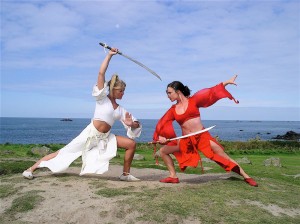
Boudiccu and White Arrow
Have you fought much in competition in the ring for example, can you tell us a bit about that?
When I first started out in silat I competed in the European Championships and won my category. This was after training intensively every day for six weeks with my first teacher Ariffin Mahiddin. The condition was that he would teach me a special sword form no westerner had ever learnt before if I would enter this tournament. I trained everyday and at the contest won the sword form and empty hand forms. After that I didn’t really go into any more tournaments as that wasn’t my main motivation. I think silat in a tournament scenario is quite difficult as the rules about how and what you can and can’t attack take away the essence of true Silat!
Have you ever been in real life situations where you needed to fight and use your skills?
I’ve had two fights with guys and two fights with girls. On both occasions, I experienced a slow-motion feeling where I was able to focus my energy and not panic. For example when I was grabbed, in every confrontation I’ve had, I was able to fight back while keeping under control. I’d trained hard core with guys much bigger and stronger than myself, so I have the confidence of thinking to myself, “I can take him”. I think the mind plays a huge role in winning a fight.
Sometimes, when you confront someone, they get shocked especially if they had never been confronted and it can make them change their tune pretty quickly!
Which female martial artists have most impressed and influenced you, who comes to mind as heroines for you?
I think my absolute heroine in the martial arts was my tai chi teacher called Gerda Geddes, (tai-chi name: Pytt ). She was about seventy five years old when she was teaching me and was an amazing, inspiring character and a beautiful person from an aristocratic Norwegian ancestry who was herself more the rebel, arty type. I believe she was the first person to bring tai chi to the UK in the 40’s or 50’s. She was the one that really caught my attention as she knew all the philosophy and how it relates to the moves, she was absolutely my heroine! I think she died around 82 years old while doing tai chi on a mountain in Scotland!
In the movies, I would have to say Buffy The Vampire Slayer! Seeing that onscreen inspired me to fuse acting and martial arts together for TV and films. Actually, I’ve only started watching martial arts movies like Ong-Bak and The Raid recently.
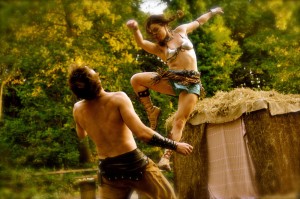
Boudiccu delivers a flying knee into Malik -Warrioress
You created the all-female martial arts performance group: Babes with Blades, which is such a great idea, whom does it consist of?
In terms of the upcoming movie, it stars Lauren Okadigbo, Yennis Chung, Cheryl Berniston, Heather Mclean as well as a couple more with particular abilities and myself.
Cecily, you’ve played the main character (Boudiccu) in Warrioress of course, would you say this is your most prolific showcase so far, do you feel this movie captures the best and widest variety of your moves and abilities?
Definitely, yes, absolutely!
What’s the name of the new movie you’ve done?
It’s a Babes With Blades movie called “Flower of Sarnia”. A steampunk style action movie featuring the last of a mythical warrior race. More to come.
Do you do all your own stunts?
Yes, I do. I also do a lot of stunt doubling for others. I stunt double lots of youngsters because of my size, and because of that very same reason, there isn’t anyone who can stunt double me!
In Warrioress were there any wires?
No. It’s all done for real, no trickery used in the stunts.
Were there any injuries on set?
Nothing serious at all. I mean there were a few cuts, scratches and bruises and all the girls performing are super tough. No one really got injured on either film, you’re always thinking of safety and you don’t push people beyond what they can manage, but I do push myself!
You’ve worked with some of the best female martial artists/stunt players in the country like Helen Bailey and Zara Phythian and more recently, Lauren Okadigbo, who else would you like to work with?
There are not many action women involved with film that I know of at this point in the UK, but I’d certainly be interested to connect with more women that are!
Can you name your top five kung-fu movies that come to mind?
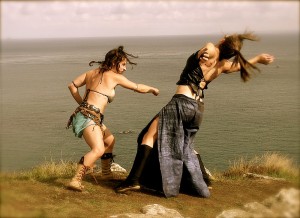
Boudiccu kapows Djahn!
- The Raid
- Ong-Bak
- Merantau
- Hero
- Crouching Tiger, Hidden Dragon
I also love Jackie Chan’s style, the comedy and crazy stunts. It’s pretty amazing what he does, I’m a huge fan of anything like that!
What would be the ultimate dream come true for you, career wise?
To be able to continue to make and fund films. Hopefully if they do well enough, we’ll use the same team to make even more interesting and exciting action movies. I really want to bring something new to indie martial arts films and have our production company turn around unique films with our brand which will always feature strong female characters.
Hong Kong, Thailand, and increasingly India, are hotbeds for martial arts action – have you ever thought of doing movies in Asia?
I would love to go over there and work on some of those films. It’s never been the right time because I’ve always been involved in things here along with my family commitments. If I had the part of a lead character or other defined role, I’d be over there in a flash. I’d certainly love to work with the directors, fight choreographers and teams behind “The Raid”, and “Ong Bak” that would also be a great source of fulfilment in terms of working with other people. Overall they’re so well put together, contain gymnastics, no wires -that’s the kind of thing I’d want to bring into my role.
Can you outline your training and workouts –do they involve a mix of cardio, weights, martial arts moves and forms, flexibility and circuit training?
I usually train from forty five to ninety minutes per day depending on what’s happening that day. There is usually one day off where I’m teaching rather than training, but I always do the conditioning part with my students. If I’ve a project coming up, it could suddenly be that I’m training for five hours! I do an absolute mixture and I try to vary what I do each day so as not to get stuck in the same pattern doing the same moves all the time, so, I’m always stimulating different muscle groups. I’ll warm up on a cross trainer to get my blood pumping, then I’ll do things like a hundred kicks on each leg consisting of five sets of twenty (of five different types) , then I might do some kind of kettle bell moves, other days may be more circuit based, with pull ups etc for maintenance. Mostly though, I train martial arts, with a lot of the silat conditioning. For example, the harimau moves are very, very good and there are some amazing static (holding) postures that are very tough, so I do a lot of that and also practice the sword forms. So, I do a mixture of things and I go to a gymnastics club as well.

Cecily as Boudiccu and Helen as Djahn
Can you share with us any specific or special training techniques or secrets that really work for you?
The main thing that I try and teach people when training, is to find that discipline whereby they can push themselves when they’re training by themselves. For instance, the mindset when your body is beginning to burn with pain from effort it’s not going to get any worse, so you might as well keep doing it! Pushing the pain barrier as I think people can give up too quickly sometimes. It’s good to remember that when you just keep pushing that little bit more, your body will adapt for sure -the mind controls everything, so it’s teaching the mind not to give up, the mind gives up long before the body does.
What’s the most daring stunt you’ve ever done?
Probably the one in Warrioress where I jump backward from one person to another: I was jumping pretty high up and the timing of three people was involved -it could have gone seriously wrong, landing on someone else’s, or my own head. The scariest one was (in Warrioress) whilst in a concrete bunker. I back somersault-off a concrete ledge into a dip that was also concrete with a lip of the concrete going down to the floor in diagonal lines which meant I had to push back at the same time. You really couldn’t see where you were going to land because there was a slope sticking out. You can’t afford to make mistakes on concrete! This was all filmed in Guernsey and you’ll see real German bunkers -it’s all real and these bunkers look like alien structures growing out of the cliff side, they can’t be moved, they’re pretty indestructible!
What special recuperative remedy would you recommend for people living a physically active/intense lifestyle?
A hot bath works for me! Overall for me, it’s often more mental than physical. I like relaxing by walking in nature, roaming the cliffs of Guernsey for example. By walking among trees, in nature even for brief periods, you can reconnect with yourself rather than having the distractions, what with phones buzzing and TV’s and so on. Sit in the sun…feel the wind on your face, being among the elements is really refreshing to your mind and body. My way of relaxing is to be in nature. There are silat meditations that I do at certain times for example, once a year, I do a forty day meditation for an hour per day. It may not be possible to do those 365 days a year, but just keeping a balance between that silat Malay (sufi or meditative) practice and the modern, hectic, busy lifestyle is helpful.
You’re actually vegan, can you tell us more about that?

Cecily Fay -blade-fu!
I’ve been vegetarian from the age of twelve, and vegan since I was twenty. I eat nothing from animals at all so it’s a moral choice, I don’t believe its necessary to kill or exploit animals in order to survive and be fit and healthy. I try not to use any by-products unless it’s really necessary. For example I don’t buy leather frivolously, or anything that involves cruelty to animals, so I don’t buy or wear leather coats or things like that. Many people say it’s difficult to observe such practices, but actually, it’s fairly easy these days. For food, many shops stock soya milk, the big supermarkets have lots of tofu and bean curd products and most restaurants will have options on that. My favourite foods are Japanese, Thai and Indian which have multiple vegan options.
I normally eat very healthily, things like bean curd and rice, lentil dahl with rice and vegetables, (wheat and gluten free) pastas, I get my protein from bean curd, nuts and avocados, pulses and things like that. For a treat I have vegan crisps and donuts! I do take multivitamins and iron, I sometimes take kelp. I also drink Innocent smoothies and I’m also a big fan of lady grey tea (not so much coffee as it makes me hyper!).
How does a day in the life of Cecily Fay shape up from the time of waking until going to sleep?
It depends what’s going on. I’m usually up around 9am, I meet my friends at the gym, train for an hour to an hour and a half and sometimes have a swim, then I have lunch at home. In the afternoon, I’ll get on with edits for the film and the music score. Then I’ll take a break and go for a walk, working until about 2am. I work well without distractions, after everyone has wound down at around 10pm. So, I’ll work, then end with a bath. So generally, unless I’m filming, I’m up relatively late, sleep late, train and do my creative projects.
What other things should we look out for?
Warrioress is released on DVD in the UK on 26 May – go to Amazon to order now!! There’s a new Tarzan film coming out this year (from Constantine Films) which is all animation but I did motion capture for one of the main characters which is a gorilla. So in the same way Gollum was filmed in “Lord of The Rings” so I play Teeka the gorilla. Things like this, playing aliens and weird animals are great fun!
What other hobbies and interests do you have?

Cecily Fay is Boudiccu -the Warrioress!
I am very interested in Celtic mythology and folklore. I like to go to places, ancient sites connected with ancient myths of the country -I’m really fascinated in studying the archetypes connected with it and, seeing how I feel. Again, it’s connected to the martial arts because it’s about the stories of warriors and heroes. Everything I do relates back to the warrior part of myself. I think everything I do is driven by my quest for self discovery.
If you could be a superhero, which would you be and why?
I like Batman and I love Superman, (and I do like the new films as well) so I like both the anti-hero and the hero! But I suppose I readily identify better with Catwoman –a crazy cat lady kicking people with stilettos!
What’s one geeky thing about you that not many people know?
Doing the gardening? I do like playing air guitar and Guitar Hero to 80’s rock ballads. I do have a guitar but I’m terrible at it!
What’s one of your favourite books?
I read fantasy, sci-fi and philosophy books like “Reality Through the Looking Glass: Science and Awareness in the Postmodern World” by CJC Clarke. I’m fascinated by those concepts. Another is the work of Don Cupitt, professor at Oxford and his Solar Ethics which is all about blazing brightly, being true to your nature, blazing brightly and burning radiantly.
What advice would you give to women in particular who want to take up martial arts?
Basically don’t be intimidated about it, I think that stops a lot of women. Many have this image in their head of going to a class with lots of sweaty guys jumping around being aggressive! It’s really not like that: they’re usually very welcoming. Research why you want to do it and what you want to get out of it, is it more about fitness or self defence for you? Different martial arts offer different kinds of training. Just turn up and give it a go! Many women don’t get past that initial fear, so don’t hesitate, just try it.
Which warrior (or shall we say Warrioress;) principles do you live by?
Protect those who can’t protect themselves, that’s one of the main things a warrior does. Whatever we put out we’ll get back so do unto others as you would want done unto you, that’s definitely something to live by. Keep to your good intentions regardless of reverses, and you’ll always have a pure heart.
What special message do you have for Kung-fu Kingdom readers and your fans?

Cecily Fay -Babes with Blades
To any of you interested in martial arts, I’d say keep up that energy and persist because it’s such a deep and complex world, there’s always something new to discover. Stick to it and it will lead you to good places!
Last but not least, which one warrior-wisdom quote impresses you favourably and keeps you motivated?
I would have to say the one that came from the TV series “Monkey”, namely, “The nature of monkey is irrepressible!” My dad used to pick me up and throw me in the air when I was tiny and say “The nature of Cecily is irrepressible!” I always think of that when I need some inspiration. I think of when Monkey bursts out of that rock. That’s definitely added to and shaped what I’ve become today.
Is there a website that readers can visit to learn more about your work, join your classes etc?
www.cecilyfay.com
Warrioress.co.uk
Babeswithblades.co.uk
My production company is FearfulSymmetryProductions.co.uk
Sadly we’ve reached the end, we’re really grateful Cecily for your kind participation in this riveting interview -we wish you the very best with the release of “Warrioress” and further success with all your current and upcoming projects, we’re keen to hear more so keep in touch.
Thank you, it’s been really good Raj with a nice angle including some unusual things that I’ve never been asked before!
Trailer for Warrioress
Image Gallery




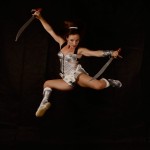





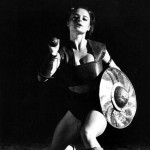

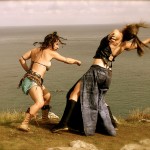

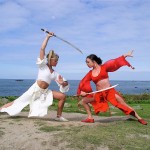



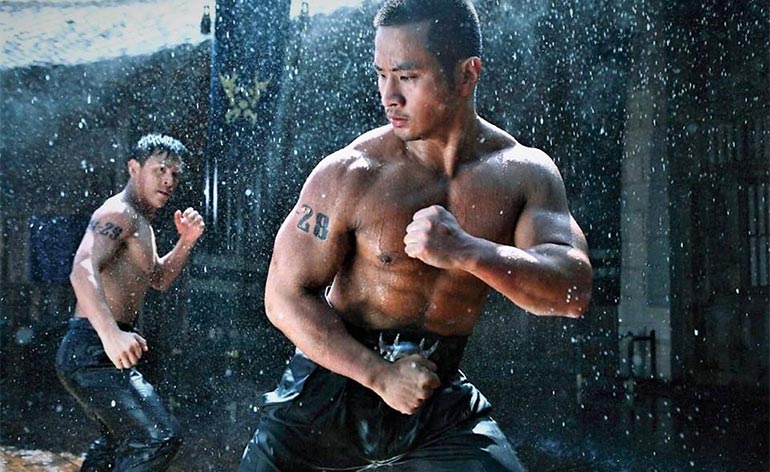
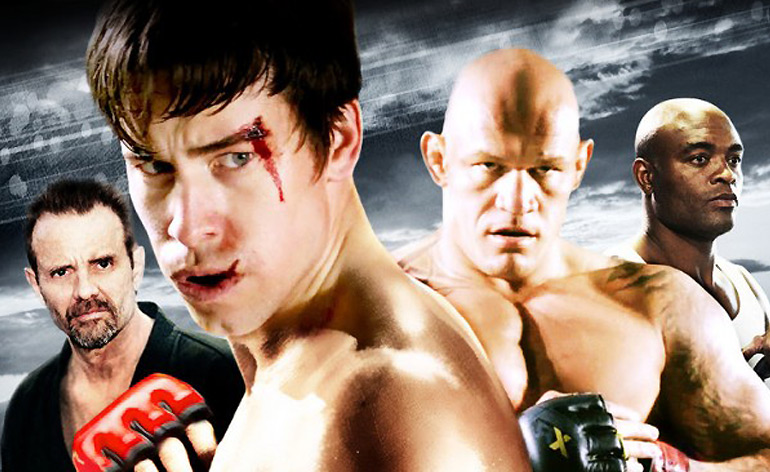
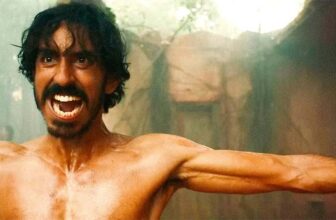


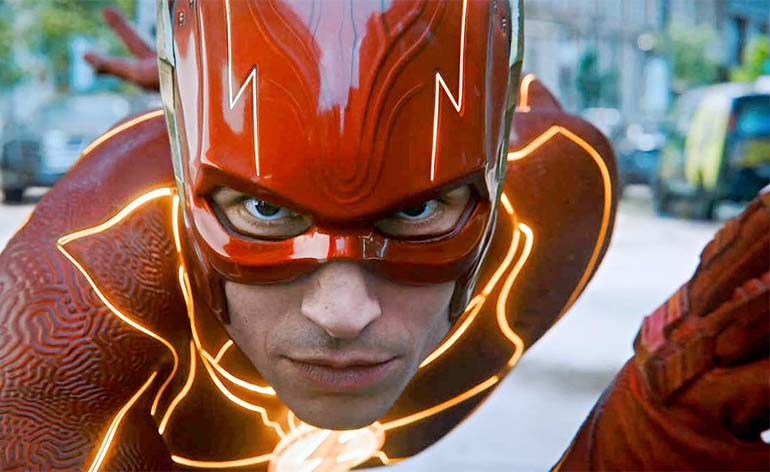
I watched her movies, Warrioress and Babes with Blades, I was impressed and now that have read her bio and seen what all she does, I am even more impressed and read one of her interviews. She has done so much in her lifetime and still singing too! Why have we not seen more of her and her career, I never heard of her til I got Amazon Prime videos! Cecily Fay, ADVERTISE MORE IN THE UNITED STATES!